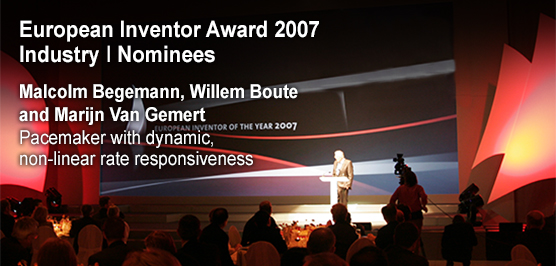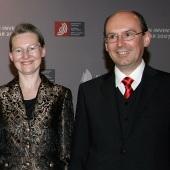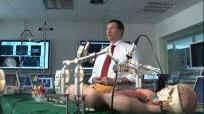Malcolm Begemann, Willem Boute, Marijn Van Gemert
A pacemaker with dynamic, non-linear rate responsiveness
Everyone has a pacemaker
It's pacemaker cells that create the vital rhythmic impulses which control the beat of the human heart. But if these cells have been damaged in some way and the natural pacemaker we are born with is not functioning as it should, then these electric impulses must be produced using a different method.
Enter the artificial pacemaker. By the 1950s, several research groups were experimenting with early pacemaker technologies, and since those first tests one of the main challenges has been centered around the issue of asking a piece of machinery to work in perfect conjunction with living tissue.
This has, of course, been overcome. But Malcolm Begemann, Willem Boute and Marijn Van Gemert felt that there was room to further develop a pacemaker that provides an even better response to the patient's physiological needs.
In a patent published in 1995, the Dutch inventors made pacemaker history. It was while working at Netherlands-based Vitatron, a specialist pacemaker company that they made their breakthrough for a pacemaker with improved dynamic rate responsiveness.
Begemann and his colleagues felt the relationship between the QT interval (the time between the start of the Q wave and the end of the T wave in the heart's electrical cycle) and the desired pacing rate should be variable and not fixed (that was the case in older models). They felt there should be means for automatic adaptation of the slope as a function of patient history in order to maintain optimal long-term rate response. And that's exactly what they made happen.
Double whammy
Begemann has since retired, but patent co-author Willem Boute is now Senior Principal Scientist at Medtronic, which wholly owns Vitatron. According to Boute, the real breakthrough this patent represents is two-fold: firstly, it deals with a more complex relationship between parameters that indicate the amount of effort and the optimal heart rate; secondly, the product senses the patient's physiological parameter changes during daily activity and then adapts its setting accordingly.
The scientists worked closely with a physician to develop the patent to ensure the final product was som ething which would be no more complex for doctors to work with than previous models.
In a groundbreaking moment, they found this non-linear relationship and realised that they had something on the drawing board that could really make a different in patients' lives. From then on out, it was just a case of realising the vision.
And while they did have setbacks during the development - low processing power of the technology platform and memory shortage among them - those were eventually overcome.
Quality of life
To say this product has been successfully commercialised is something of an understatement. It has found its way into numerous Vitatron and Medtronic pacemaker ranges - in the 1990s it featured in their Topaz pacemakers as well as Collections I, II and III - and most impressively it is still being used in the company's very latest products such the C- and T-Series of digital pacemakers.
According to Vitatron, sales of their pacemakers have more than doubled since the introduction of this new technology in 1998. When the features were combined with the Medtronic Model 9790 programmer and available in a small-sized pacemaker, sales also surged.
This patent has helped to increase the quality of life of people who suffer from heart problems and require pacemakers. It has taken pacemaker development a significant step forward, and it did this by closely emulating the best pacemaker of all - the natural one.
How it works
The key breakthroughs in this patent were really two separate but related innovations: the first concerned dealing with the complex relationship between the physiological parameter and the optimal heart rate; the second was focused on achieving this without making it more complex (for the physician) by designing a product that was able to sense the patient's physiological parameter changes during daily activity and then adapt its settings accordingly.
The pacemaker will, for example, vary the pacing rate between lowest (lower rate limit: when the physiological parameter is at one end of that particular patient's spectrum) and highest (upper rate limit: when the physiological parameter is at the other end of that particular patient's spectrum).
In this way, the patient's heart rate (as dictated by the pacemaker, which is the case in many pacemaker patients whose own heart rates are absent or too slow) closely matches the metabolic demand.
Although rate responsive pacemakers have been available for many years, this patent provides an improved response to the patient's physiological need.
It makes significant improvements in determining the correlation between the sensed patient indicator variable and selected pacing rate. It also features rate control means for dynamically adjusting the control of pacing rate as a function of a monitored patient variable, and provides an improved means and method of adapting pacemaker rate responsiveness to the pacemaker patient.
Contact
European Inventor Award and Young Inventors Prize queries:
european-inventor@epo.org Subscribe to the European Inventor Award newsletterMedia-related queries:
Contact our Press team#InventorAward #YoungInventors



